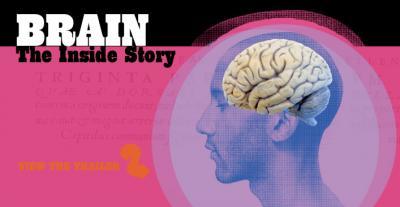Professor Greg Burdea has been featured in a new exhibit, "Brain: The Inside Story," at the American Museum of Natural History, in New York City. Open now through August 15th, the exhibit seeks to provide visitors "a new perspective and keen insight into their own brains." Professor Burdea's research contributes quite well to such an aim, and it’s no surprise that the Museum would incorporate his work. Not a surprise except to Prof. Burdea, a member of the Rutgers ECE faculty, who had no idea about his involvement with the exhibit. "The first time I knew I was featured was when a colleague told me she had visited the museum with her children and saw my photo on a poster. It was a total surprise."
The Museum incorporated Prof. Burdea's work on the "plasticity" of the brain, to demonstrate how the brain can be rehabilitated and heal after an injury--a stroke, for example--waking up dormant neurons, re-training existing neurons, or re-connecting neural pathways in the brain. The key, says Prof. Burdea, "is that the patient exercises repeatedly, over long periods, and be engaged in the therapy, not being bored, not feeling pushed into the therapy, for the brain plasticity to occur."
Professor Burdea has made significant contributions to the study of the brain's plasticity. In 2003, one such contribution was his work and research he published on Virtual Rehabilitation--a term he coined to represent the advances he and his team made in the lab with patients who received brain therapy while playing virtual reality games. The patients would gladly play and participate, while being mostly unaware that they were, in fact, engaged in a process of brain therapy and rehabilitation.
Currently, Prof. Burdea is directing the Tele-Rehabilitation Institute, which focuses on remote rehabilitation and has in recent years received notice from around the world. In addition, his team’s research pioneers an integrative virtual rehabilitation approach, treating both motor and cognitive/emotive disabilities in a single treatment.
More information on the Tele-Rehabilitation Institute can be found online @ www.ti.rutgers.edu.
Article by Sean Patrick Cooper

